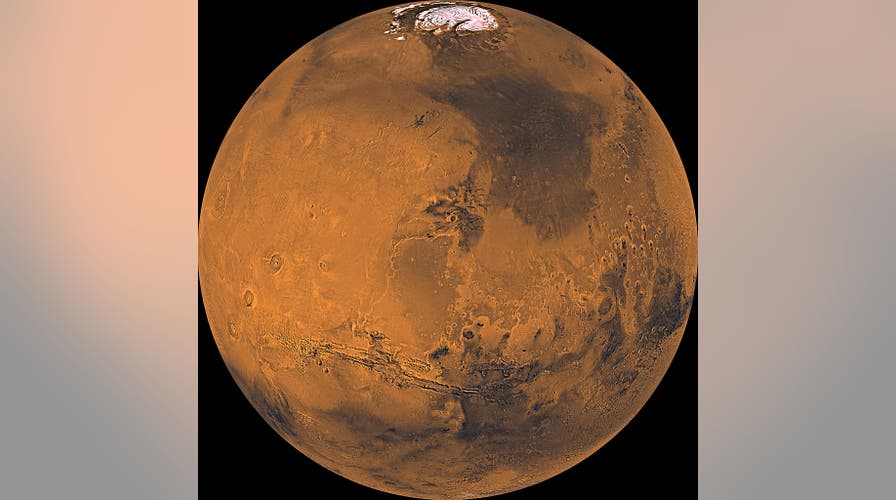Fox News Flash top headlines for Sept. 23
Fox News Flash top headlines for Sept. 23 are here. Check out what's clicking on FoxNews.com
Scientists have discovered bizarre bursts of magnetic pulses on Mars that are raising "interesting questions."
The paper, presented at the European Planetary Science Congress annual meeting earlier this month, notes that the Mars InSight lander has detected these magnetic pulses during the nighttime, a phenomenon that can't yet be explained.
"The nighttime continuous pulsations found by IFG [InSight FluxGate] are unexpected because they are distinct from what are typically observed on the Earth’s surface at the same local time," the researchers wrote. "On the other hand, we have not found the Mars counterparts for many types of geomagnetic pulsations well known in Earth studies."
NASA'S INSIGHT MARS LANDER REVEALS STUNNINGLY CLEAR PICTURES OF THE RED PLANET
According to National Geographic, the pulses were 20 times stronger than those that were previously recorded.
“We’re getting an insight into Mars’ magnetic history in a way we’ve never had before,” Paul Byrne, a planetary geologist at North Carolina State University, told the news outlet.
"We speculate that the observed magnetic pulsations by InSight to date are associated with fluctuations in the induced magnetotail and on the magnetospheric boundary," the researchers added in the study. "Under this scenario, the distinct field and plasma environment at Mars raises interesting questions about how these oscillations propagate through the magnetosphere and ionosphere and reach the surface."
The magnetic pulses are also seen with a regular frequency, which is startling to the researchers, especially given where the InSight lander is currently -- on the planet's equator.
InSight, which landed safely on the Red Planet in November 2018 after "seven minutes of terror" due to the agency's inability to control the landing of the spacecraft, is continuing the scientific legacy of NASA's Apollo missions.
ANCIENT MARS WAS WARM AND RAINY ENOUGH TO SUPPORT LIFE, STUDY SAYS
Earlier this year, NASA said the $828 million lander recorded the first-ever "Marsquake," on April 6, InSight's 128th day on Mars.
The InSight (Interior Exploration using Seismic Investigations, Geodesy and Heat Transport) mission is providing scientists with a wealth of data, including helping "scientists understand the formation of all rocky worlds, including our own," NASA explained on its website.




















